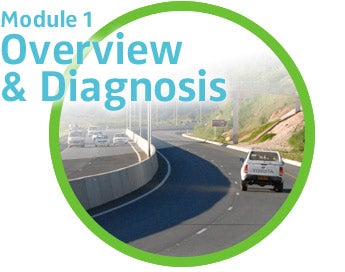
Public-private partnerships cannot be implemented in isolation. They must form part of a national highway program and be implemented within the context of national policies for private participation in the public sector. They must respond to a specific history and heritage of relationship between the public and private sectors and a culture of public tradition related to private sector involvement in providing public infrastructure.
Module 1: Overview and Diagnosis provides an overview of PPP, their application within highway development programs and the process for the definition of a PPP strategy. It presents the following:
Defining the partnership assesses the nature and scope for PPP in highways and the main types of PPP and their principal characteristics. It includes the advantages and drawbacks of PPP as opposed to conventional procurement.
Overview of PPP experience provides a historical perspective of PPP development, presents the PPP databases, notably the PPI data base for developing countries, examines current trends in PPP and defines the efficient application of PPP for highway development and maintenance.
Key Players and Roles presents the actors in PPP projects, comprising the public and private sectors, finance sector, insurance and export credit agencies and international institutions.
Enabling PPPs describes the process to achieve an enabling environment for PPP, a requirement for the implementation of any PPP project or program. However the nature of the enabling environment depends on the scale and complexity of the PPP projects to be implemented; the diagnosis assists public authorities in determining the required reforms to achieve an enabling environment.
PPP Strategy outlines the process for obtaining an enabling environment through the PPP policy framework. It introduces the main steps of a national PPP program and defines a development path for PPP.
